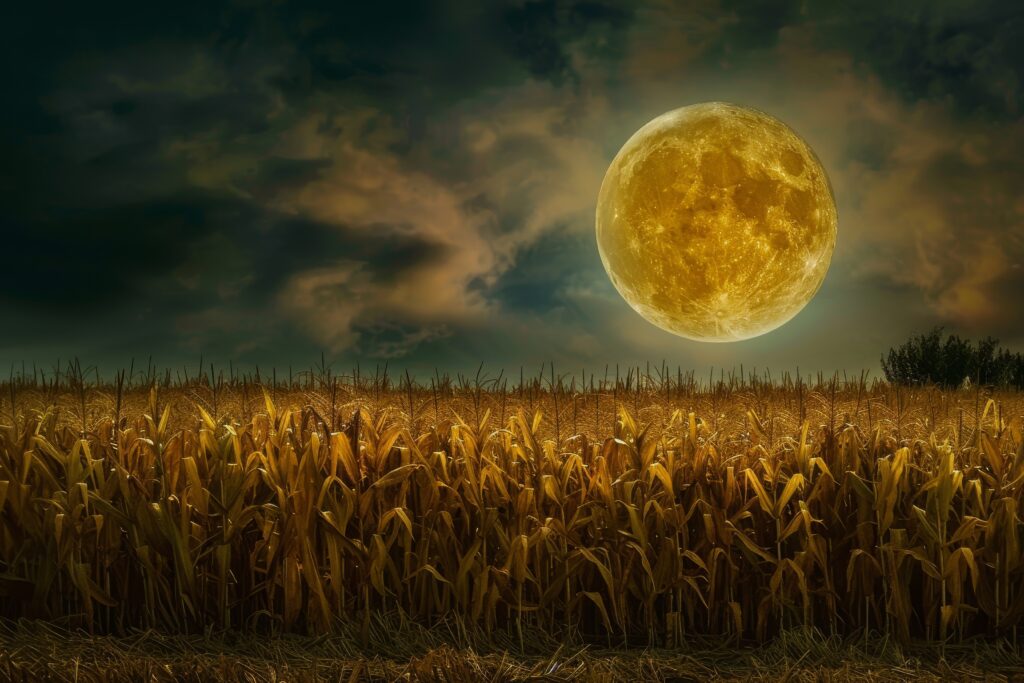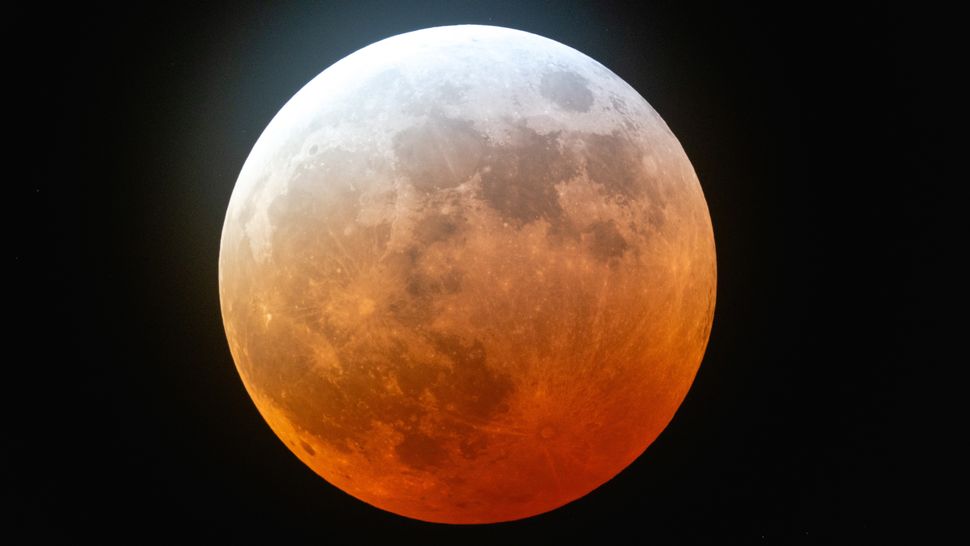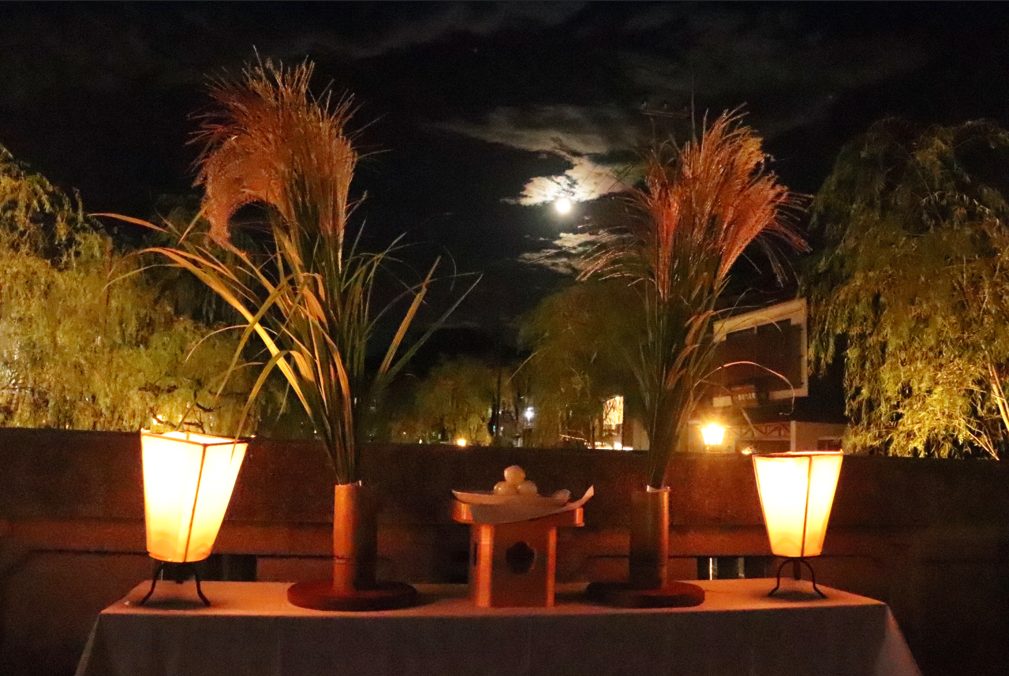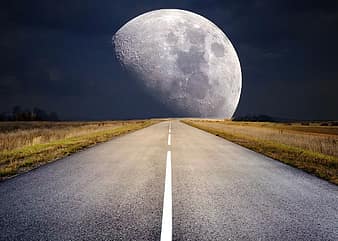In the vast expanse of the universe, few celestial events capture human imagination as profoundly as lunar phenomena. Among these, the Mystic Moon and Harvest Moon stand out for their unique characteristics and cultural significance. This article delves into the science, history, and folklore surrounding these two captivating full moons, offering a comprehensive guide to understanding their mystical allure.
What is a Full Moon?

Before diving into the specifics of the Mystic Moon and Harvest Moon, it’s essential to understand what a full moon is. A full moon occurs when the Moon is positioned directly opposite the Sun relative to Earth, causing its entire face to be illuminated. This phase happens approximately once every 29.5 days, marking a cycle that has fascinated humans for millennia.
However, not all full moons are the same. Some appear larger, others glow with an unusual hue, and some coincide with significant dates or cultural events. The Mystic Moon and Harvest Moon are two such examples that have captured the attention of astronomers, poets, and everyday observers alike.
The Mystic Moon: A Celestial Enigma
The term “Mystic Moon” is not an official astronomical classification but rather a poetic name used to describe a full moon that appears particularly striking or otherworldly. This could be due to atmospheric conditions, the moon’s position in the sky, or even cultural interpretations.
One of the most intriguing aspects of the Mystic Moon is its potential to appear red or orange, often referred to as a blood moon. This phenomenon occurs during a total lunar eclipse, when Earth’s atmosphere scatters blue light, allowing only red wavelengths to reach the Moon. While this is a natural occurrence, it has been associated with myths and omens throughout history.
Additionally, the supermoon, a full moon that occurs when the Moon is at its closest point to Earth (perigee), can also be considered a form of the Mystic Moon. Supermoons appear up to 14% larger and 30% brighter than average full moons, creating a breathtaking spectacle that has inspired awe for centuries.
The Harvest Moon: A Symbol of Abundance
Unlike the Mystic Moon, the Harvest Moon is a well-defined astronomical event. It refers to the full moon that occurs closest to the autumn equinox, typically in September or October. The name originates from the time before electricity, when farmers relied on the Moon’s light to work late into the night harvesting crops.
Historically, the Harvest Moon was crucial for agricultural communities, as it provided extended daylight hours during the busy harvest season. The Moon’s position in the sky during this time also results in a unique effect: the Moon rises shortly after sunset for several nights in a row, creating a prolonged period of illumination.
This year, the Harvest Moon coincided with a rare and intriguing date—Friday the 13th. This alignment has sparked both scientific curiosity and superstitious fascination. While there is no actual connection between the date and the moon’s appearance, the coincidence has made the event more notable.
Cultural Significance of the Harvest Moon
Beyond its practical use for farmers, the Harvest Moon holds deep cultural and spiritual meaning. In Japan, for example, the Tsukimi (月見) festival celebrates the beauty of the full moon, particularly during the autumn months. During Tsukimi, people gather to view the moon, offer seasonal foods like rice dumplings (tsukimi dango), and reflect on the changing seasons.
Similarly, in China, the Mid-Autumn Festival is closely tied to the full moon, symbolizing family unity and harvest abundance. These traditions highlight how the Harvest Moon has transcended its astronomical definition to become a powerful symbol of nature’s cycles and human connection.
The Science Behind the Harvest Moon
From an astronomical perspective, the Harvest Moon is simply the full moon closest to the autumn equinox. However, its timing and visibility are influenced by several factors:
- Orbital Position: The Moon’s orbit around Earth is elliptical, so its distance from Earth varies. When a full moon occurs near perigee (closest point), it can appear larger.
- Atmospheric Conditions: Weather patterns, pollution, and air quality can affect how the Moon looks in the sky. Clear nights provide the best views.
- Geographic Location: The visibility of the Harvest Moon depends on where you are in the world. In the Northern Hemisphere, it typically occurs in September, while in the Southern Hemisphere, it may occur in March.
Despite these variations, the Harvest Moon remains a consistent and predictable event, making it a favorite among amateur astronomers and stargazers.
The Mystique of the Mystic Moon
While the Harvest Moon is rooted in astronomy, the Mystic Moon is more about perception and interpretation. Its mystique lies in the way it interacts with the environment and the emotions it evokes.
For instance, a blue moon—the second full moon in a calendar month—is sometimes called a Mystic Moon due to its rarity. Although the Moon doesn’t actually turn blue, the term has taken on a symbolic meaning, representing something extraordinary or infrequent.
Another example is the harvest moon itself, which, while scientifically defined, is often imbued with a sense of magic and wonder. Many people find the sight of a full moon rising over a field or cityscape to be deeply moving, reinforcing the idea that the Moon has a special place in human culture.
Conclusion: Embracing the Magic of the Moon
Whether you’re gazing at the Harvest Moon or the Mystic Moon, these celestial events remind us of the beauty and mystery of the universe. They bridge the gap between science and folklore, offering a glimpse into the forces that shape our world.
As we continue to explore the cosmos, the Moon will always hold a special place in our hearts. It has guided sailors, inspired poets, and supported farmers for thousands of years. And as long as we look up at the night sky, the Moon will continue to captivate us with its timeless glow.
Author: Sarah Thompson
Title/Role: Astronomy Correspondent
Credentials: With over a decade of experience covering space science and celestial events, Sarah Thompson has written extensively on topics ranging from planetary exploration to lunar folklore. Her work has appeared in major publications including National Geographic and Sky & Telescope.
Sources:
– NASA – Lunar Reconnaissance Orbiter
– National Geographic – Full Moon Phenomena
– Japanese Ministry of Foreign Affairs – Tsukimi Festival
Related Articles:
– What is a Supermoon?
– The History of the Harvest Moon
– Moon Phases Explained



Call to Action:
Stay updated with the latest news and celestial events. Explore the wonders of the universe with our expert insights and guides.











More Stories
What Is Yodo Para Tiroides and How Does It Affect Thyroid Health?
How to Claim Your Joy in League of Legends: A Step-by-Step Guide
What is WSET? A Comprehensive Guide to Wine Education